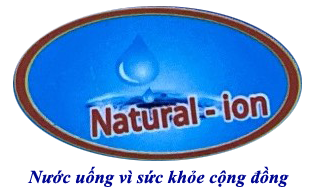
In a nutshell, COGS is the bill for creating or buying the stuff a business sells. Imagine your favorite bakery – the cost of flour, sugar, and the baker’s time to make those croissants you’re so fond of. Integrate financial data from all your sales channels in your accounting to have always accurate records ready for reporting, analysis, and taxation.
Variance?
It includes direct costs such as direct materials or direct labor and indirect costs such as plant manager’s salary or property taxes. Recall that selling and administrative costs (fixed and variable) are considered period costs and are expensed in the period occurred. Understanding Period Costs is crucial for any business looking to navigate the complex landscape of financial management. By grasping the distinction between Period Costs and Product Costs, businesses can accurately assess their expenses and make informed decisions to improve profitability. From administrative and selling expenses to marketing costs and depreciation, every Period Cost plays a role in shaping a company’s financial health. In a service industry, period costs may include administrative staff salaries, marketing expenses, office rent, and utilities.
How to Allocate Period Costs?

And while product costs focus on the creation of goods or services, period costs represent the broader expenses necessary to sustain the business’s overall operations and facilitate growth. The period cost is important and a necessary thing to keep track of because it allows you to know your company’s net income for each accounting period. Keeping track of the period of cost is also important for filing accurate business taxes and for preparing for an audit. Tracking period costs will also help a business how is sales tax calculated balance its budget and gain savings. It will also allow a business to focus on growing and controlling direct costs.
Example 1: A Simple Calculation of Cumulative and Point in Time Cost Variances
And product costs play a significant role, especially in valuing the goods a company hasn’t sold yet. The concept of Total Period Cost originates from managerial accounting, where it’s essential to distinguish between costs directly tied to production and those that aren’t. This distinction aids in the accurate financial assessment and strategic planning of a company’s operations. Calculating Cost of Goods Sold (COGS) accurately is vital for profitability analysis but can become difficult when managing fluctuating costs and large inventories. Artificial intelligence simplifies this process by automating cost tracking, identifying pricing anomalies, and forecasting future changes. On the other hand, if a cost is linked to a product, inventory, production, or goods and may be incurred over several accounting periods, you may be looking at a product cost.
Examples of Calculating Total Period Cost
- Accurate calculation of the Total Period Cost can be challenging due to various reasons.
- Since the loan was borrowed specifically for the fixed asset; hence the first-year interest cost will be capitalized with fixed assets.
- Once the inventory is sold or otherwise disposed of, it is charged to the cost of goods sold on the income statement.
- When setting prices for products or services, businesses must ensure that all costs, including period costs, are covered to maintain profitability.
- If a company orders more raw materials from suppliers, it can likely negotiate better pricing, which reduces the cost of raw materials per unit produced (and COGS).
- Variable costing accounting is calculated as the sum of direct labor cost, direct raw material cost, and variable manufacturing overhead divided by the total number of units produced.
- Misclassification or inaccurate calculation can lead to misstated net income, affecting business decisions and financial health evaluation.
Using the above-given data, we will first calculate calculate the total variable cost. The variable costing calculator can be used by following the steps as discussed below. This shift is also driven by the need to fill roles that U.S.-based workers alone can no longer meet. As demand for specialized period costs skills rises, businesses are broadening their hiring strategies, looking to Latin America as a solution to the talent gap.

In addition to being qualified professionals with fluent English and located in a similar time zone, Latin American talent is eager for salaries in stronger currencies compared to their local currencies. In the current economic context of the main talent sources, currency Catch Up Bookkeeping exchange rates against the dollar only reinforce this trend. We’re a headhunter agency that connects US businesses with elite LATAM professionals who integrate seamlessly as remote team members — aligned to US time zones, cutting overhead by 70%. Period costs are of no less help, as they allow you to understand how well you’re running your business. Today, we’re breaking down these two concepts to understand their general aspects, relationship with financial statements, and overall impact on business decision-making. This calculator streamlines the process of computing the Total Period Cost, making it an accessible tool for business owners, financial analysts, and academic use.
Streamline Calculations with Sourcetable

Visit app.sourcetable.com/signup to start your free trial and experience the ease of managing calculations with Sourcetable. Save time and effort with our easy-to-use templates, built by industry leaders. Explore our marketplace and find the perfect tool to streamline your processes today. Therefore, the cost is lower than the pricing offered in the contract, which means that the order can be accepted.


